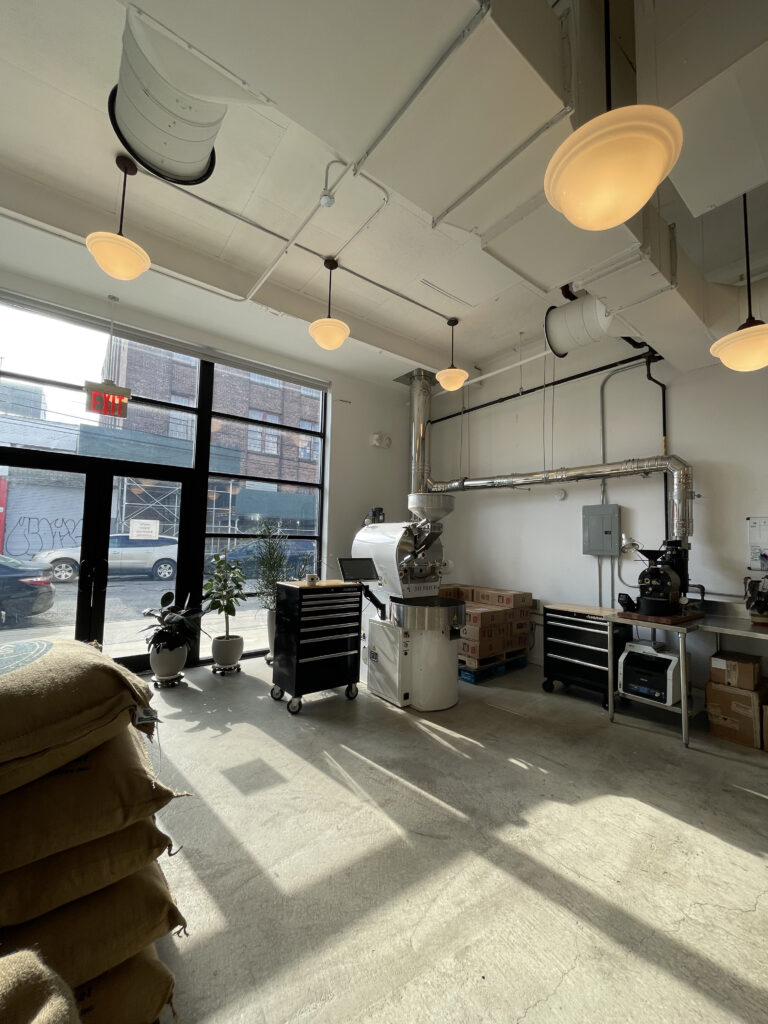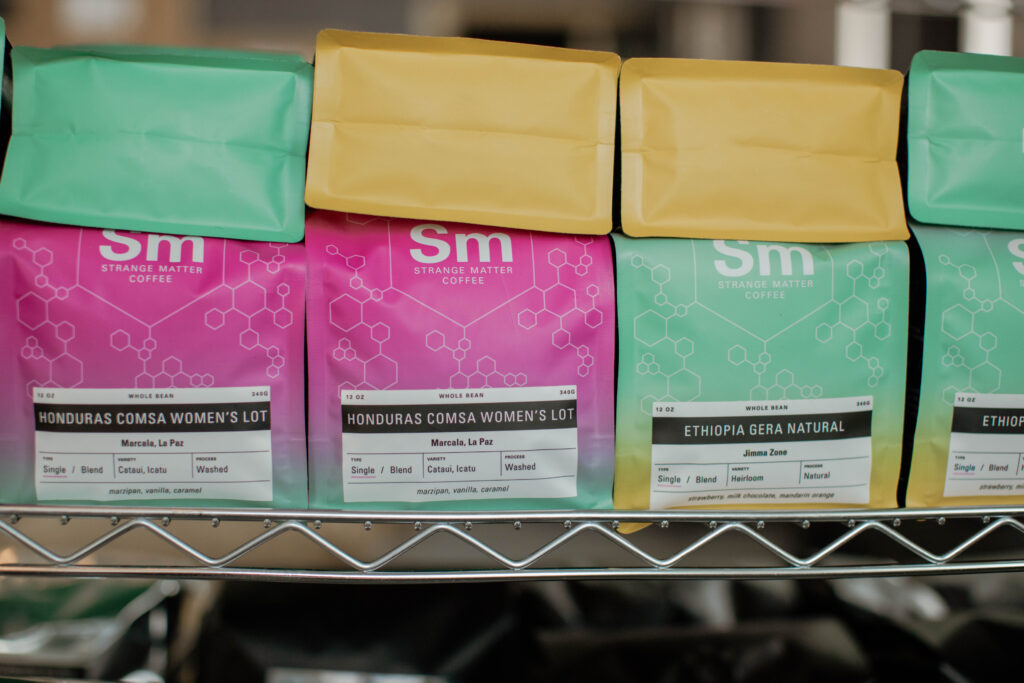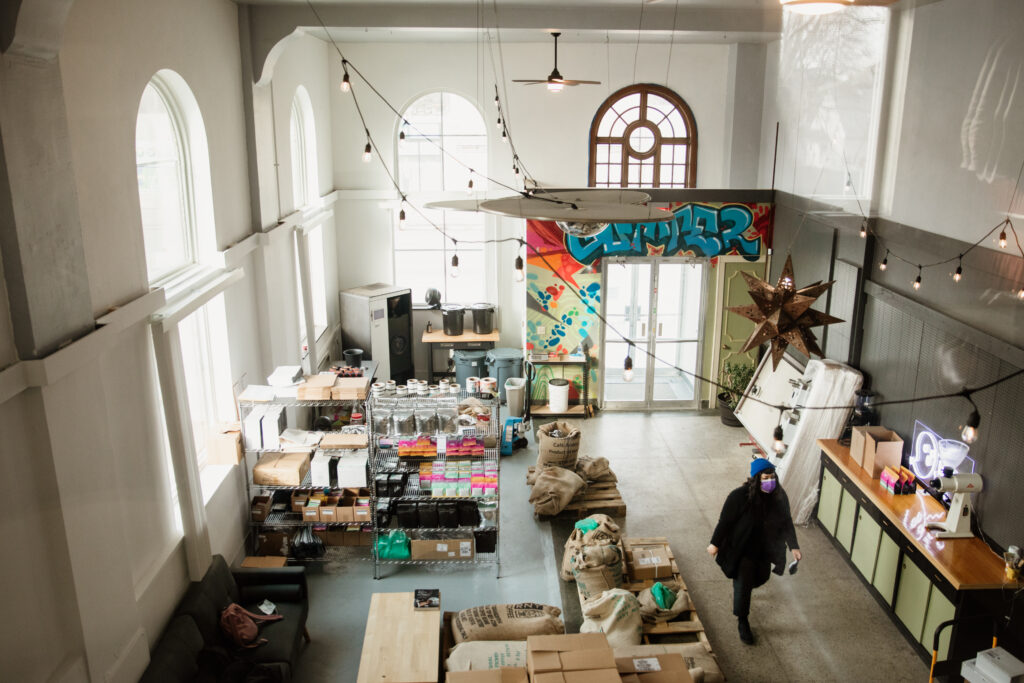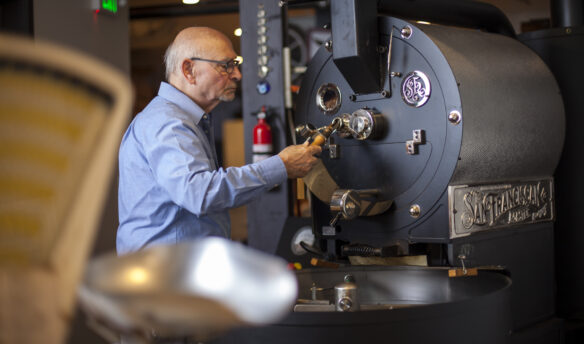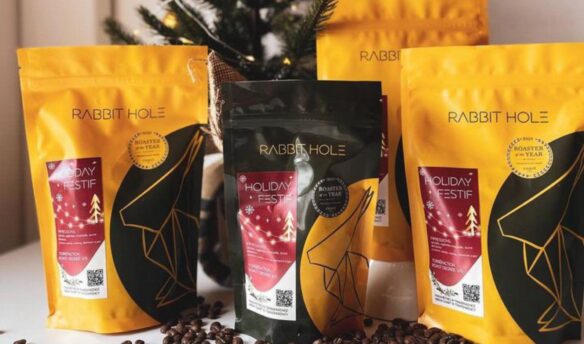Roasting specialty coffee has never been more accessible than it is today. With the increased availability of coffee roasting equipment and high consumer demand for specialty coffee, more cafes that started as retail spaces are getting into roasting.
For the coffee shop wanting to grow, roasting your coffee may seem like the next step. But is it the right move for your business? Are the challenges and obstacles worth the effort, time, and money? Having transitioned from retail-only to roasting, we interviewed business owners about the challenges and opportunities of starting a roasting operation.
Taking Matters Into Your Own Hands
The market for commercial coffee roasting has been partly driven by consumer demand. According to The National Coffee Association, more than half of coffee drinkers (53%) want to buy ethically sourced products that are good for coffee farmers and communities. Opting for locally roasted coffee can help small businesses in the area and support the small coffee producers they source from.
This surge in popularity shows no signs of slowing, with recent studies reporting that the global coffee roaster market is projected to grow at a rate of 6.3% from 2022 to 2030.
Ken Nye, the owner of Ninth Street Espresso in New York City, worked with roasters to source coffee for almost a decade before his team began roasting in-house. The cafe opened in 2001, and while the idea to roast came up for the first time in 2005, he decided to wait to pursue it. “The playing field was very different in 2005. There were a handful of high-quality, specialized roasters doing good work—it made it very easy not to take the step,” he explains.
At the time, Ninth Street Espresso worked closely with its specialty coffee roasting partners, which let the independent shop have some level of control over its coffee supply. “We actually participated in the decision-making process on a really deep level. Everything from the green coffees we purchased at different times of the year to selecting roast profiles,” says Nye.
However, the coffee scene had all but changed by 2013. The industry had become increasingly crowded, and Ninth Street Espresso had become a key player in New York’s independent coffee scene with multiple locations. “At that level, we became frustrated with the inconsistency we were experiencing from the roasters. We realized that for us to get the quality and consistency [of coffee] that we have become accustomed to, we were going to have to take over and do it ourselves,” Nye shares.
The good news for cafes today is that roasting is no longer the secretive and guarded trade it once was. In the past decade, the rise of third-wave coffee culture brought new technology and increased interest in roasting. Social media platforms like YouTube helped coffee professionals share insights and demystify the coffee roasting process. Meanwhile, the availability of software like Cropster has made it easier to connect globally and fine-tune roasting profiles.
“I don’t think there was such an open base of information that was shared and accessible to so many people the way there is today, especially in roasting,” Nye says, “it was hard to get started unless somebody took you in under their wing.”
Roasting is a complex process that requires understanding the science behind coffee roasting and how the specific roasting equipment is used. Achieving consistency in roasting is vital, and a difference of a few degrees can significantly impact your final product. The narrow margin of error can make the process seem daunting for those just starting.
Cara Nader of Strange Matter Coffee, a coffee bar and bakery in Lansing, Mich., found that pivoting from retail to roasting coffee solved her need for quality control and profitability. “I always swore I would never roast coffee,” she says. “I didn’t think I had the mental capacity to cope with that kind of knowledge and all of the science behind it.”
Despite being a 20-year veteran in the coffee industry, Nader never considered roasting coffee in-house until the closure of retail spaces in 2020 prompted her to make a change. Before launching its roasting operation, Strange Matter was a multi-roaster shop sourcing coffee from roasters across the nation. Once foot traffic stopped, Nader was forced to reconsider her buying options.
“It reached a point where I needed more control over this process,” he says, “so I could accomplish what I wanted and have the margins that I needed to survive.”
The Cost of Roasting In-House
Launching a roasting operation creates a new set of expenses for retailers. While roasting might initially seem like adding a new component to your existing retail space, Nye explains that taking on roasting is more akin to opening an entirely separate business you need to develop from the ground up.
“We’re paying rent for the [roasting] space, utilities, salaries for roasters, and all of the packaging costs,” he says, “and costs to get that coffee into our shops with shipping and driving it.”
Nader agrees that owners need to carefully weigh the costs of roasting before jumping in feet first. On average, Nader says she was paying $11-$13 per pound of coffee from wholesale roasters. Taking over the roasting took costs down to $4-$6 per pound for the same quality coffee beans, even after factoring in labor costs. But Nader still cautions there’s more than green coffee prices and labor to consider.
“You have to look at the cost of shipping. Can you receive a giant semi [truck]? Where are you storing giant bags of coffee? And then you have to look at the labor hours associated with roasting and the cost of packaging,” says Nader. Nye adds that it’s easy for small-batch roasters to get caught in a position where they’re spending more money to roast rather than continuing as simply a retail or multi-roaster shop, “unless you’re moving enough coffee and poundage.”
But how much coffee should cafes be selling before they have enough volume to justify the cost of roasting?
Nader advises owners who move through more than 100 pounds of espresso each week to explore roasting their coffee. “I think you can easily make up the difference with your own roasting operation,” she explains. Retailers who want to get started today have more options for smaller, eco-friendly roasting systems. Co-roasting spaces have emerged with shared access to equipment and facilities, allowing smaller, independent roasters to use high-quality equipment without the expense of building their own infrastructure.
For the first two years of roasting, Ninth Street Espresso worked out of the Pulley Collective, a co-roasting space in Brooklyn, NY. “It afforded us the opportunity to start roasting coffee without making a major investment,” says Nye.
Strange Matter Coffee began roasting within a month after Nader discovered she could start on-site with a Bellwether roaster. While traditional commercial roasters require the construction of gas lines and vents—in addition to specialized training for use—the Bellwether is 100% electric, ventless, and automated. According to their website, a Bellwether roaster removes the need for highly trained staff and reduces the carbon footprint from roasting by 87%.
Two years later, Nader’s roasting operation has expanded to a separate building. She has a full-time employee who roasts coffee for all Strange Matter Coffee locations and their wholesale customers.
But initially, the Bellwether system made roasting much more approachable. “We didn’t have to think about huge mechanical installations or construction and permitting,” she says, “I credit that shift with saving our business during the pandemic. I don’t think we would have made it otherwise.”
Beyond expenses, roasting added a popular new product line to Strange Matter’s retail business. “We’ve seen our whole bean sales skyrocket from what used to be a middling 4-6% of our daily sales up to 10-20% of our daily cafe sales,” shares Nader. With this increase in sales, Strange Matter has expanded its offerings and reached a wider customer base, including wholesale customers. “We retail to some local, small-format grocery stores in the specialty market.”
Nye says the most significant upside of roasting is adding a new dynamic to your business. “I’m creating new jobs and opportunities that could keep some young people who would have become tired of coffee if they were strictly held within working in a retail space,” he says. With Ninth Street’s roasting operation, interested baristas could learn new skills and explore career paths in roasting and green coffee sourcing instead of plateauing behind the bar.
Today, coffee roasting is an accessible venture for small roasters who want to diversify their business. “I hope we will see roasting play a role in smaller independent shops, letting them become more autonomous and less dependent on others to sell them coffee.”
Strange Matter photos by Jennifer A. Berggren


